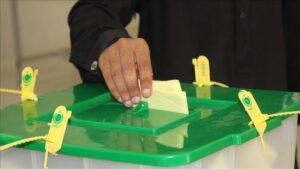The fire incessantly unleashed for more than two weeks in the Korangi Creek area of Karachi has finally been extinguished, concluding an 18 -day episode that attracted generalized attention.
The fire, which began on March 29 after a 1,200 feet well, well drilling, expressed serious concerns about the nature and volume of underground gases that fed it.
Although the flames have decreased, gas emissions continue from the well, causing the water, initially used by firefighters, explodes on the site. The situation remains unstable, with hot water and visible vapors that still emerge from the ground.
In response, the Petroleum Ministry established a special committee to evaluate methane gas and consulted CUDD Well Control, a US -based global expert. UU. In emergency response.
The technical teams of Pakistan Petroleum Limited (PPL) and United Energy Pakistan Limited made a visit to the articulation, noting that the intensity of the fire had remained unchanged for days, which indicates a potentially significant underground gas reserve.
The crater has expanded due to the displacement of sand and overflowing water. The preliminary chemical analysis of the site water has revealed dangerous levels of chemical products, such as benzene, toluene, tetrachlorethylene and o-xylene.
Tetrachlorethylene was recorded at 33 µg/L, far exceeding the safe limit of 5 mg/l. Benzene levels reached 19 mg/l, almost four times the amount allowed, while Toluene was found at 15 µg/l.
Although hydrocarbons were within the allowed limits, experts warn that the presence of these dangerous substances raises environmental and continuous health risks.
More research is being carried out to evaluate long -term risks and identify the exact source of gas leak.




